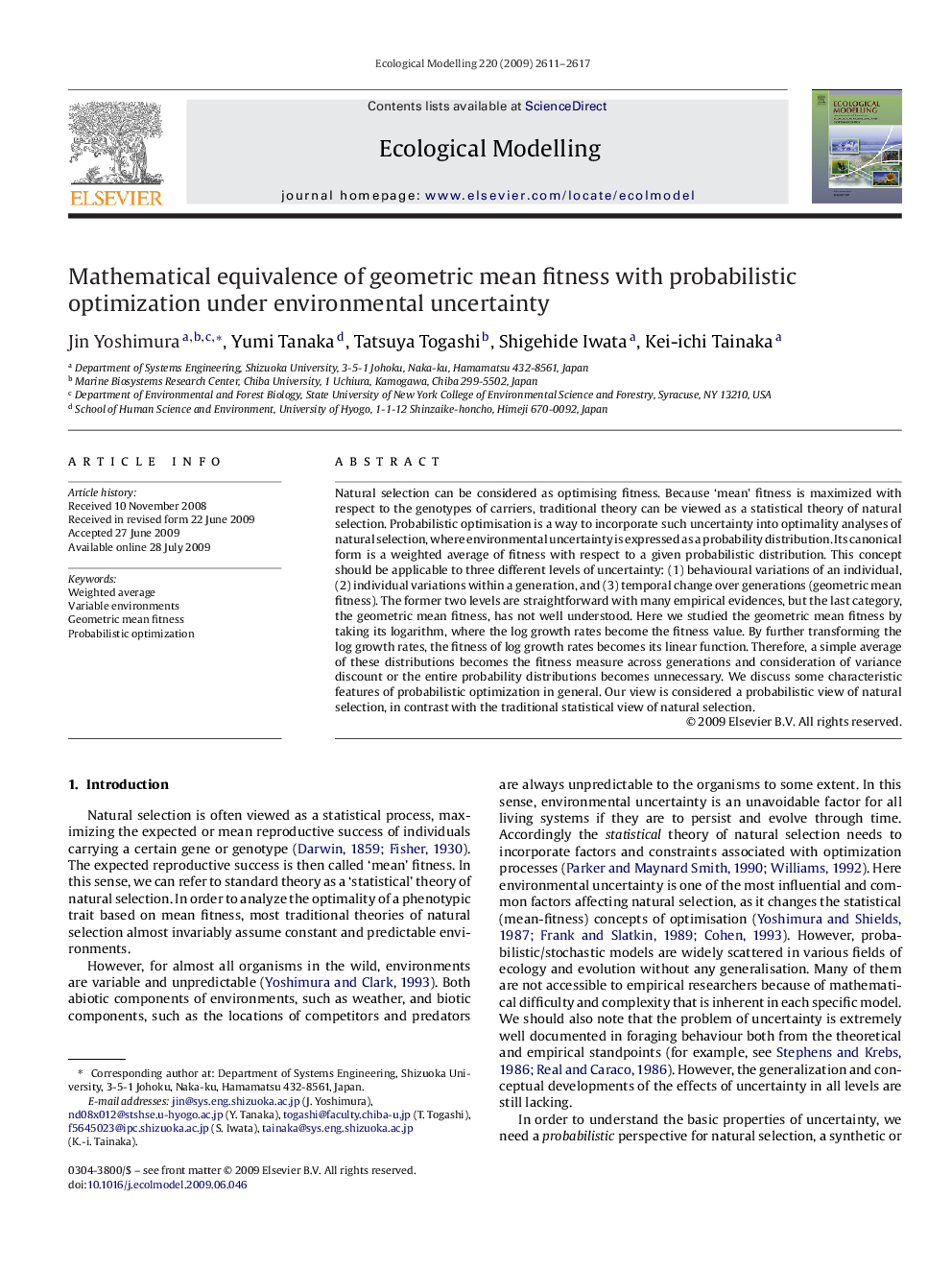| Article ID | Journal | Published Year | Pages | File Type |
|---|---|---|---|---|
| 4377543 | Ecological Modelling | 2009 | 7 Pages |
Abstract
Natural selection can be considered as optimising fitness. Because 'mean' fitness is maximized with respect to the genotypes of carriers, traditional theory can be viewed as a statistical theory of natural selection. Probabilistic optimisation is a way to incorporate such uncertainty into optimality analyses of natural selection, where environmental uncertainty is expressed as a probability distribution. Its canonical form is a weighted average of fitness with respect to a given probabilistic distribution. This concept should be applicable to three different levels of uncertainty: (1) behavioural variations of an individual, (2) individual variations within a generation, and (3) temporal change over generations (geometric mean fitness). The former two levels are straightforward with many empirical evidences, but the last category, the geometric mean fitness, has not well understood. Here we studied the geometric mean fitness by taking its logarithm, where the log growth rates become the fitness value. By further transforming the log growth rates, the fitness of log growth rates becomes its linear function. Therefore, a simple average of these distributions becomes the fitness measure across generations and consideration of variance discount or the entire probability distributions becomes unnecessary. We discuss some characteristic features of probabilistic optimization in general. Our view is considered a probabilistic view of natural selection, in contrast with the traditional statistical view of natural selection.
Related Topics
Life Sciences
Agricultural and Biological Sciences
Ecology, Evolution, Behavior and Systematics
Authors
Jin Yoshimura, Yumi Tanaka, Tatsuya Togashi, Shigehide Iwata, Kei-ichi Tainaka,
